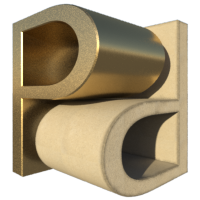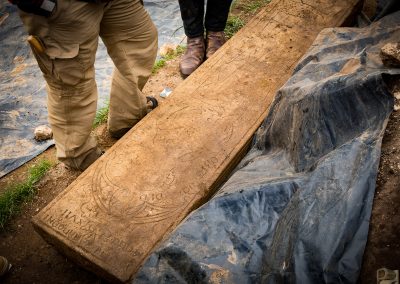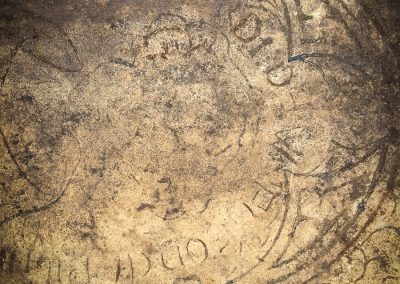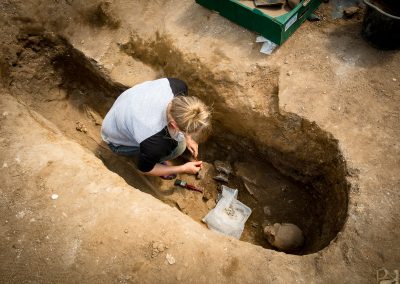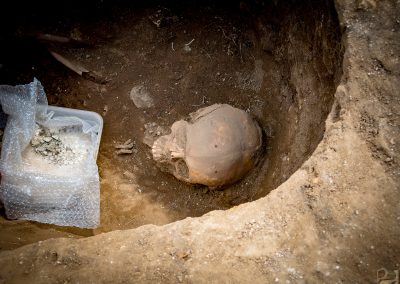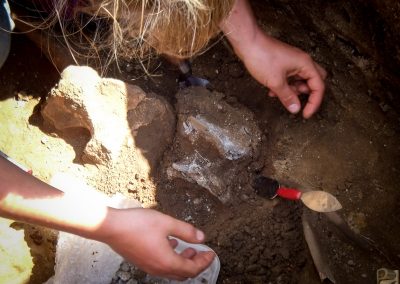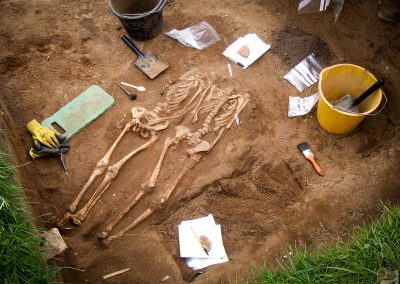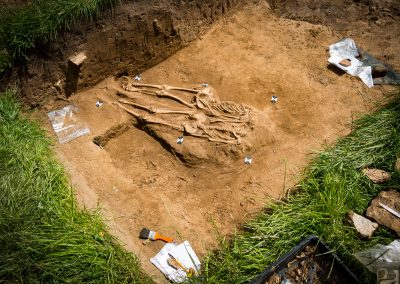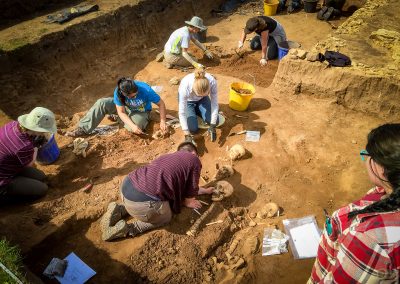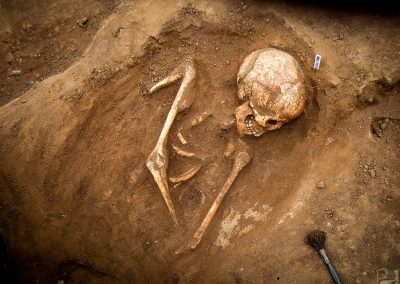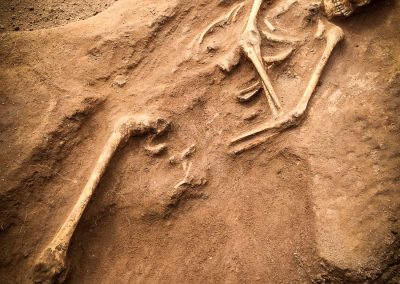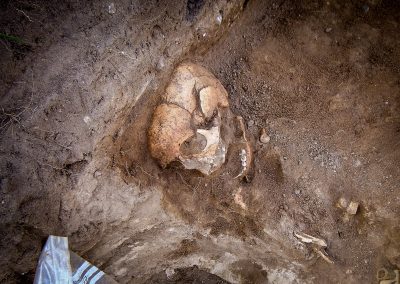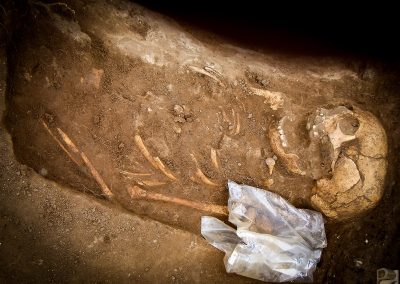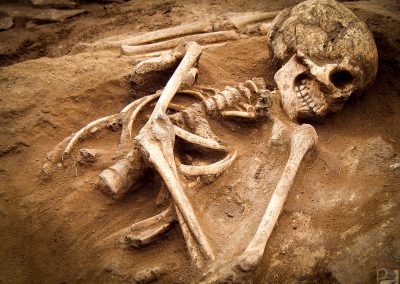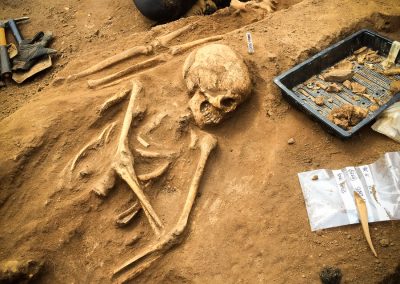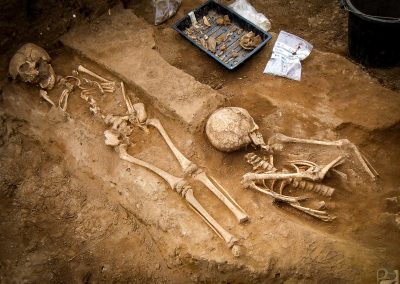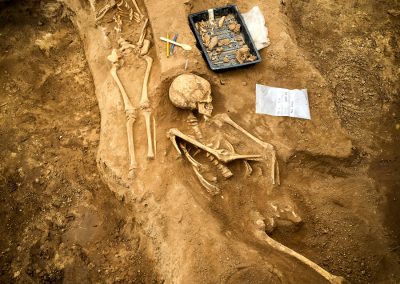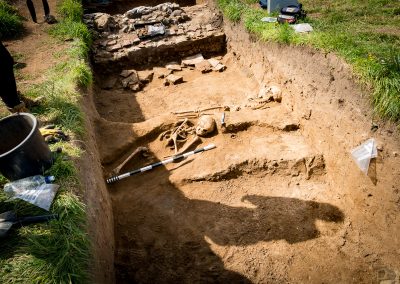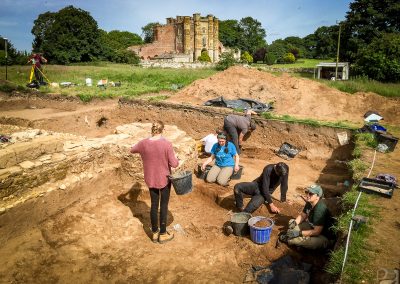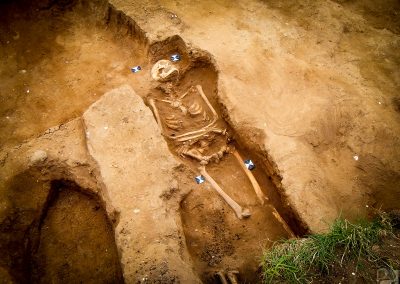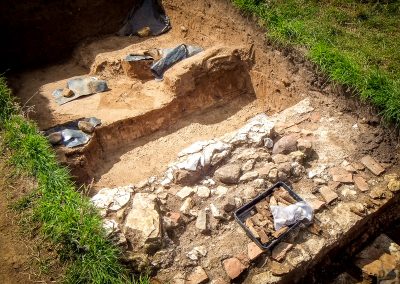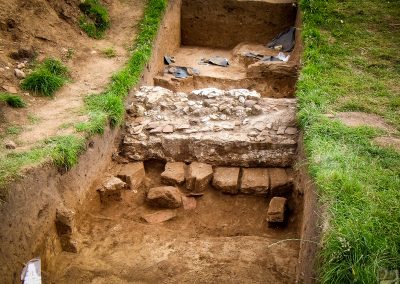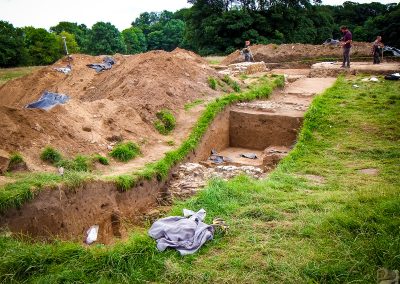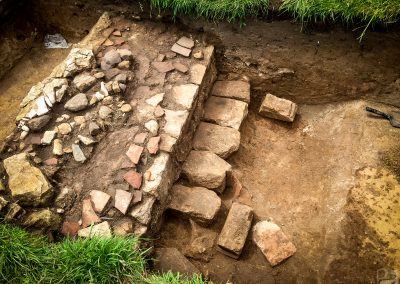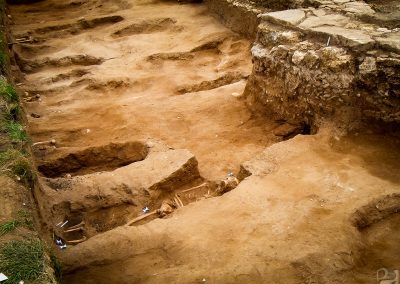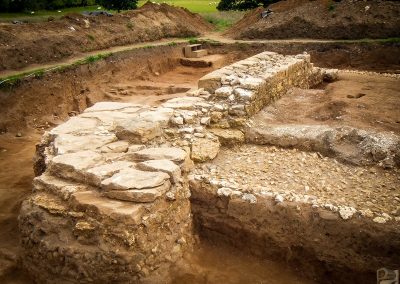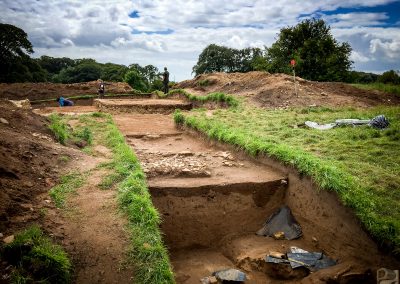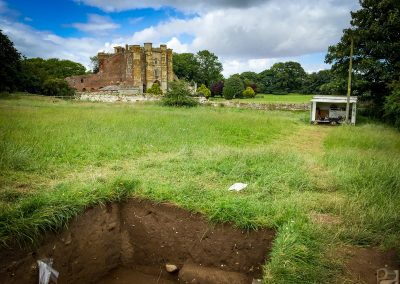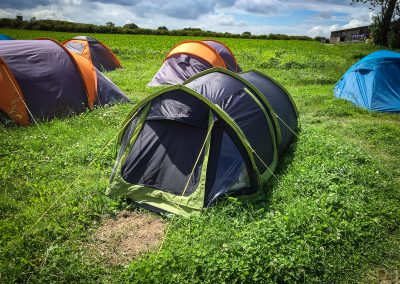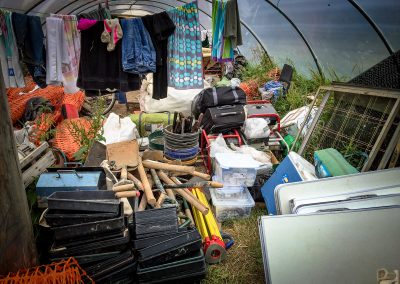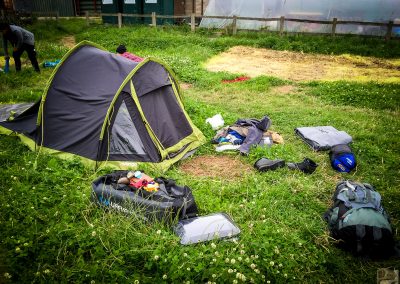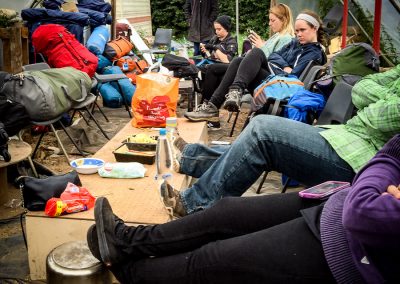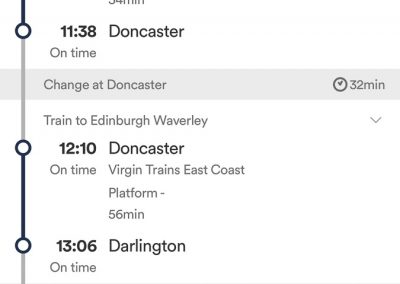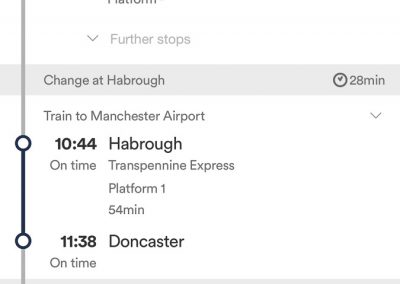This page documents week 2. If you wish to read week 1 click here.
Location
http://www.english-heritage.org.uk/visit/places/thornton-abbey-and-gatehouse/
Thornton Abbey
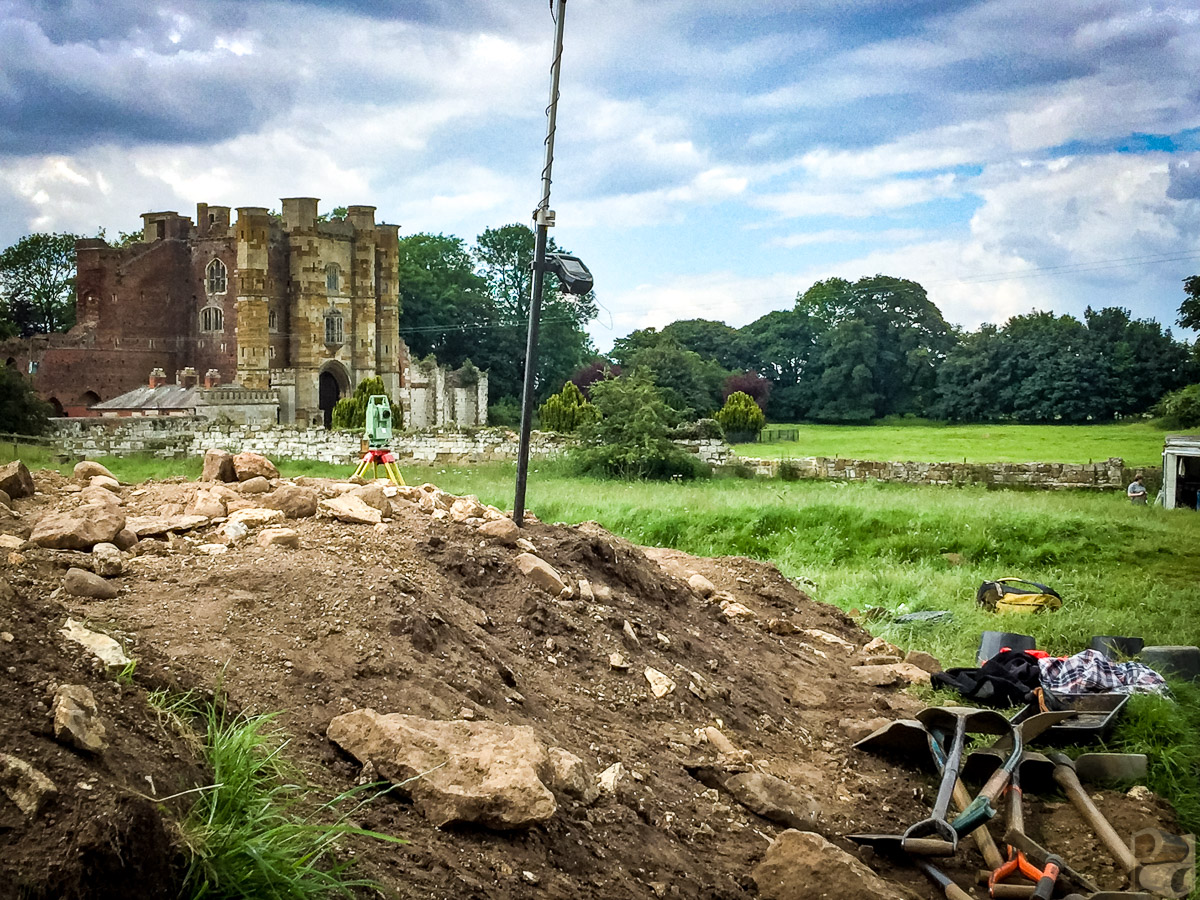
Day 9 (Sunday 3rd July 2016)
On Friday, we found a stone coffin lid buried in the floor. It had obviously been robbed back in antiquity but the markings were very clear on the slab which named the burial. The coffin lid still had paint present and was unbroken. As the site was further excavated we also found the remains of its occupant. The skeletal remains were in quite a poor condition but from an initial examination it could be seen that he had suffered from rickets during life. A lead chalice was found held in the occupants’ hands but it was extremely fragile and very difficult to extract cleanly.
I finished excavating the skeletons from Friday and was given the go-ahead to begin lowering the ground level further after a clean-up of the site. There is still one skeleton that had been left from Thursday as we needed to wait until the two juveniles had been lifted and the ground level lowered in line with it.
Day 10 (Monday 4th July 2016)
On lowering the ground level in readiness to excavate the next skeleton I uncovered yet another. At this point I had a change in partner so that someone else could gain some skeletal excavation experience. I then concentrated on the new find which was slightly unusual in its positioning.
The skeleton had been transected just above the pelvis; this had happened in antiquity as part of what may have been the process of a grave being cut. The lower lumbar region and the upper pelvis were missing however the pubic arch was still present along with the right leg although the foot extended into the trench wall and would need to be recovered at the end of the dig. The position of the head was pointing to the left and downwards not unusual in a burial however, the arms were not crossed but were articulated as if cradling a child with the left hand under the right. The upper torso was twisted slightly to accommodate this and in the space bounded by the left arm there was discolouration of the soil which gave the impression of a small rounded object which may have been the remains of an infant. I stayed clear of this area as I carefully began to excavate the assemblage and was told that it may be an animal hole which had been back filled. The only way to know for sure was to section the area later once the remains had been lifted.
Day 11 (Tuesday 5th July 2016)
Spent today carefully excavating the new find. Very slow progress but will hopefully be ready to lift it tomorrow all being well.
In the process of moving around the trench I had uncovered another skull in the corner and although we will not be excavating it as it extends beyond the trench it was surprising at first to see a marker and piece of plastic tarp in the same context. In fact, this was where the trench had overlapped a previous trench and the remains were already recorded as part of that excavation. So no, we had not uncovered some marvellous medieval tarp!
Day 12 (Wednesday 6th July 2016)
Today was taken up with lifting and recording the assemblage I have been working on for the past few days. A long process of bagging, tagging and paperwork. This skeleton had quite an effect on me.
Excavating a burial in the knowledge that you are uncovering the remains of someone who once lived nearby, who had hopes and dreams and, in the case of the remains I have worked on during this dig, met their end at such young ages is very sobering. At all times, you must treat the remains with care and respect. Between the discovery of the burial through to the last bone to be lifted you are mindful that the act of excavation is final, a systematic destruction of the site. For me, I felt honoured to have spent those moments knowing I would be as caring as anyone could be during the process.
Day 13 (Thursday 7th July 2016)
The skeletons have been excavated and recorded and while the photographing was happening I was put in the main trench to locate another burial, one which was thought to be in a particular area between two other assemblages. Twenty mins later I had located the skull but left it for someone else to excavate as I was needed back in my trench to excavate more of the outer wall. We are not going to begin excavating any more human remains now as the end of the excavation is approaching and the site is beginning to wind down. I am working more towards clearing and cleaning the rather substantial wall section which transects the trench.
Day 14 (Friday 8th July 2016)
Final day at the excavation site. Continued through the morning cleaning the wall and the rest of the trench in readiness for final photographing and the closing down of the site. By lunchtime everyone was removing all tools and ensuring the site was safe and tidy. Once the site was clear I took the opportunity to do my own photogrammetric survey of the overall site for reconstruction later once I returned home. For the afternoon, I began packing my gear away in my tent so I would be ready for an early departure in the morning. The night was an end of dig barbecue. Everyone was in good spirits.
Day 15 (Saturday 9th July 2016)
Final Day at Thornton Abbey. After what seemed like a ridiculously short night’s sleep it was time to take the tent down and pack up to leave. Another 5-hour journey would see me back home, and in the shower! Participating in the excavation at Thornton Abbey was a real experience for me. I had studied anatomy for years, but in a much different context. Getting up close and personal with human remains has been fascinating and has given me food for thought as to whether I want to follow an osteological or paleopathology direction in the future. Since gaining some experience through Thornton I decided to look at osteology for my Aims & Methods in Archaeology undergraduate module assessment for which I gained a first-class mark. Thanks, Thornton!
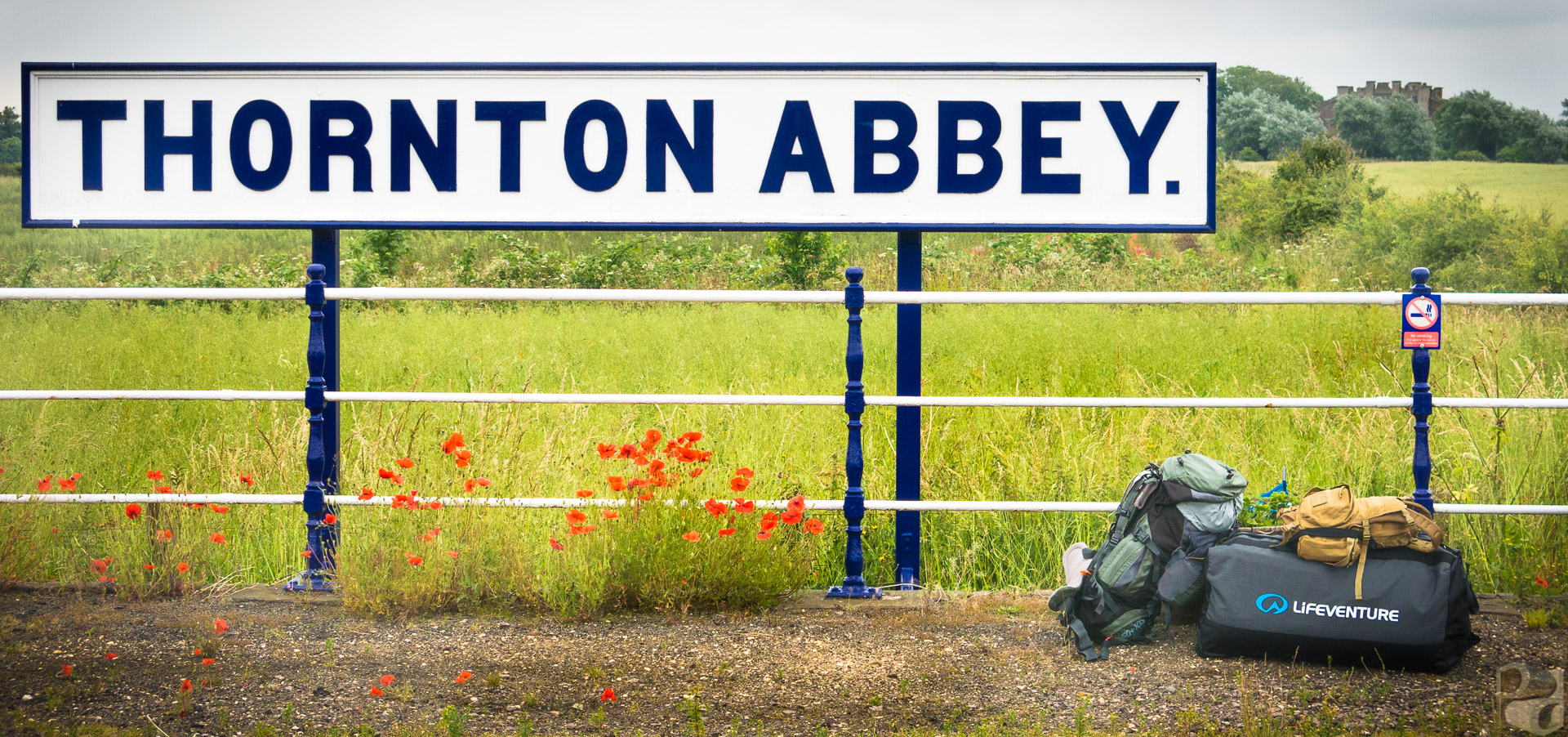
Update (Monday 17th April 2017)
Since the excavation took place, the team of archaeologists from the University of Sheffield have managed to analyse the remains of the grave with the stone coffin lid. We know that the occupant was Richard de W’Peton and that he died on April 17th 1317, exactly 700 years ago from the date of this update! On the coffin lid was the Biblical inscription ‘that at the name of Jesus every knee should bow, of those in heaven, and of those on earth, and of those under the earth’.
The skeletal remains show that whilst Richard was an important man at Thornton, dental analysis showed evidence of malnutrition during childhood indicating much more humble origins or times of strife. His skull also exhibited signs of violent trauma in the form of a healed indentation, which likely happened many years before his death. No exact cause of death has been determined but the main theory suggests that he died through starvation during the Great Famine which hit Europe between 1315 and 1317. Richard was aged between 35-45 years-old at the time of his death and likely stood around 5ft 4 inches tall.
Further news of this can be found through the following links.
Grave of medieval priest with mysterious head injury uncovered in Lincolnshire – The Telegraph
Skeleton of Lincolnshire priest found after 700 years – BBC News
‘Hell on Earth’: Yorkshire academics reveal secrets of medieval grave – The Yorkshire Post
Team discovers 700 year old grave at Thornton Abbey – Scunthorpe Telegraph
Medieval Priest’s Remains Unearthed at Thornton Abbey – Archaeology
Medieval priest unearthed at Thornton Abbey – Lincolnshire Today
